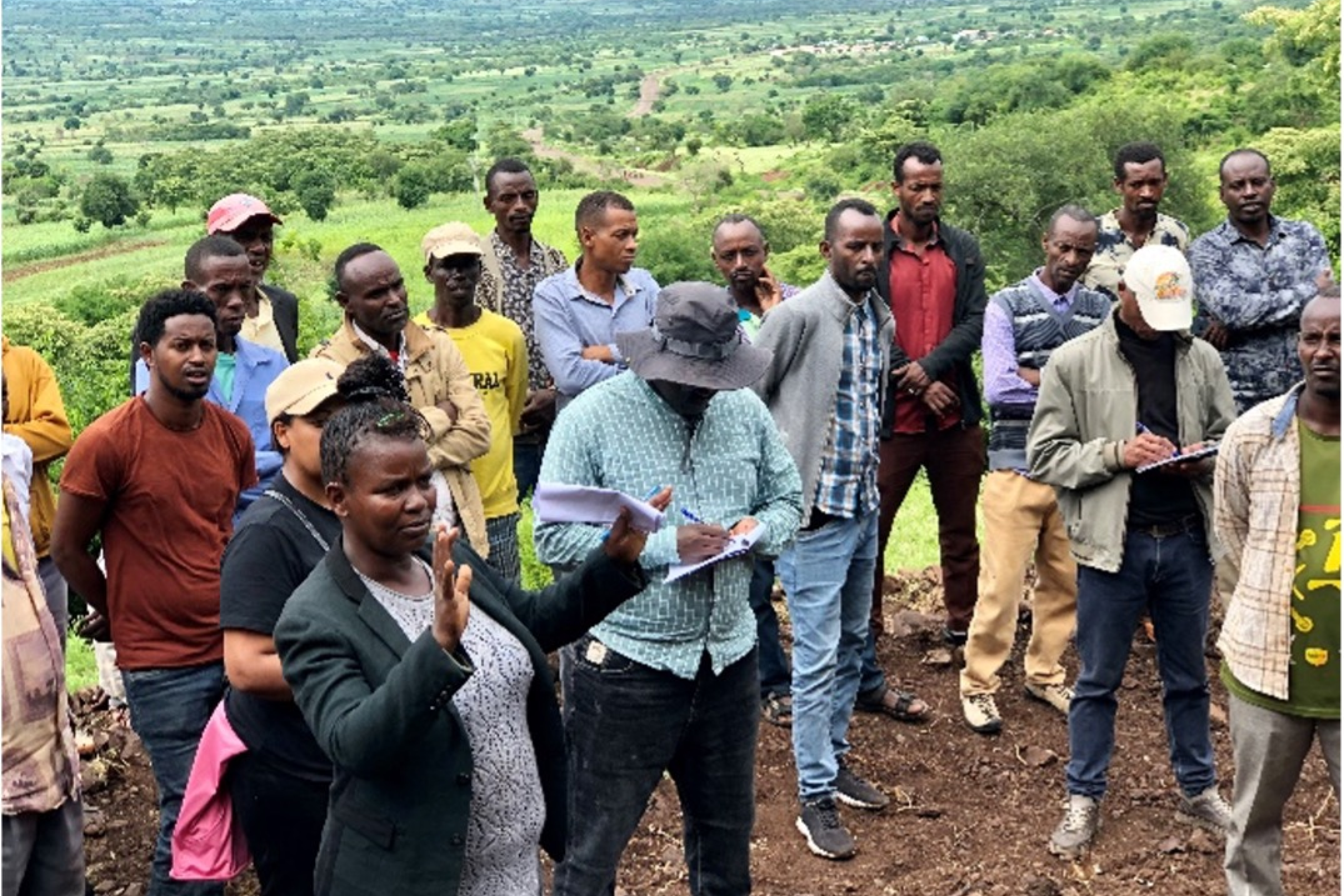The PROGREEN-supported Resilient Landscapes and Livelihoods project (RLLP) has taken an important step in linking watershed management efforts to protect Ethiopia’s natural ecosystems, such as national parks. RLLP’s objective is to rehabilitate degraded landscapes and improve livelihoods of communities while reducing human pressures on the local environment and enhancing biodiversity. In areas bordering national parks, this engagement is expected to decrease human-wildlife conflict significantly.
Zala District is around 530 kilometers from Ethiopia’s capital, Addis Ababa, in Southern Nations Nationalities and Peoples (SNNP) Region. It is in one of the seven ‘major’ watersheds supported with PROGREEN resources. The watershed extends to Maze National Park[1], which had been affected by high levels of human interference. This is because the continued degradation of communal lands has forced communities to encroach on the natural forest and the park to get fodder for their cattle, gather firewood, and generate income from other natural resource products.
In 2023, as part of PROGREEN's support for community-based watershed development, initial community consultations were followed by a participatory planning process. This led to the identification of sustainable watershed management techniques suited to rehabilitating the degraded lands around the park that provide livelihoods for the community.
Galito is one of the PROGREEN-financed micro-watersheds adjacent to the park that is playing a significant role in landscape rehabilitation and ecosystem protection in Zala district. PROGREEN support has helped communities in Galito organize themselves and establish a local cooperative that implements agreed watershed activities and collaborates with the national park authorities. This is one of around 8,000 such cooperatives that now manage community watersheds in Ethiopia’s highlands. The cooperative members at Galito have decided to enclose degraded communal lands in the micro-watershed, demarcate forests, and establish a buffer zone between the national park and community land. By using both physical and biological soil and water conservation practices and avoiding encroaching on the park, the community aims to restore their degraded watershed. Their intention is to restore the land as a source of income for the community, with multiple opportunities for environmentally friendly, income-generating activities such as beekeeping, forage development, and ecotourism.
______________________________________________________________
[1] Maze National Park is located in Southern Nations, Nationalities, and People's Region of Ethiopia, 460 km southwest of Addis Ababa. Maze was founded in 2005.

So far, the community watershed team, district level administration and Maze Park administration have worked together to identify and delineate a buffer zone where soil and water conservation activities are undertaken, agreed to prevent unmanaged livestock grazing by enclosing certain areas, and initiated some income generating activities that do not damage the local environment.
So far, more than 11km of hillside terraces and over 10km of bench terraces have been constructed in Galito micro-watershed to control and reduce soil erosion in degraded areas. The community watershed group has also set up a nursery producing indigenous tree seedlings to be planted in the enclosed areas and buffer zone during the rainy seasons (July and August).
“The commitment of the community, local level Agriculture and NRM offices, and the Maze National Park administration has shown that a better day is coming for our village,” says Mr Yacob, head of Zala district administration.
In the next few years, the community watershed user group in Galito micro-watershed intends to rehabilitate more than 1,800 hectares of forest communal grazing land and adjacent farmlands. Taken together this will reduce multiple pressures on the local ecosystem by boosting the area’s biodiversity, contributing to protecting Maze National Park, and creating viable alternative livelihoods for the community.
The approaches described here are being implemented at scale throughout the 8,000 micro-watersheds currently supported by the World Bank in Ethiopia.
